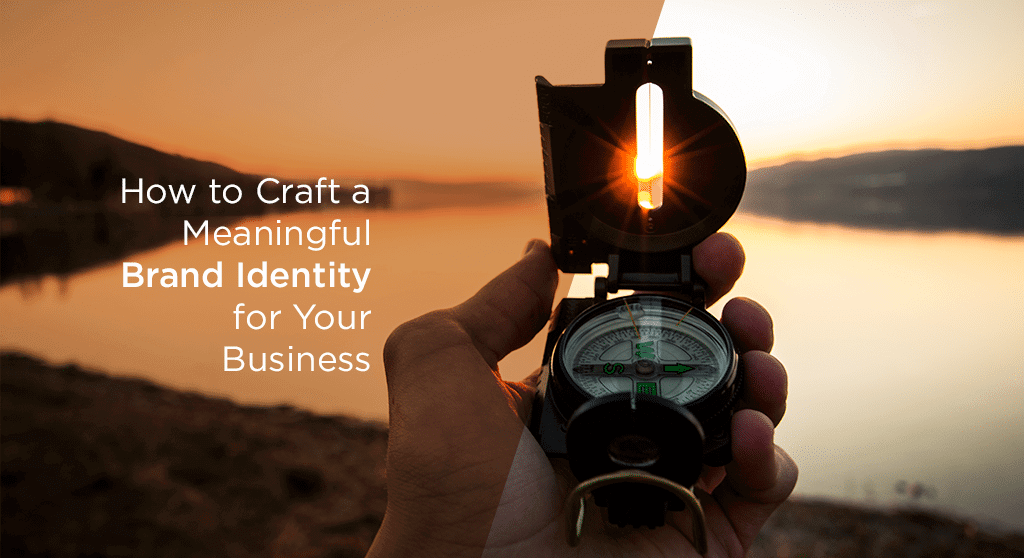
Creating a brand identity is about more than good aesthetics.
Do you know what your brand is? We’ve worked with businesses who fall on all ends of the spectrum when they try to answer this question. Some know exactly who they are, the just need help expressing it. Others find the question totally confusing.
Brand identity? Do you mean our logo? The colors we use on our website? The font on our business cards?
We mean all of that and none of that. Your brand identity comes from all the above, but more importantly, it has to do with the way these things help create associations for your brand. A powerful brand can draw on cultural associations—often subconsciously—and over time begin to create associations of its own. To create a strong brand identity, you need to be intentional about the associations your target audience will make with your brand, and apply them consistently throughout your marketing.
Aesthetics and semantics: What looks nice vs. what has meaning.
Many companies approach their brand the wrong way round: by making decisions based on their subjective preferences. They like blue, so that’s what they use in their logo. Maybe they include a bird, because they like birds. And they want to have a business card that stands on from the stack, so the choose a bold, colorful font.
There’s nothing objectively wrong with any of these things, but if you’re just picking them out based one your opinion, you’re not taking advantage of wider associations that could make a stronger emotional connection with your clients.
For instance, both Twitter and the social media scheduling company Hootsuite use birds in their brand. Why? Obviously, “twitter” draws its name from the sounds birds make. Short, incessant, distinctive. The association has meaning that makes their brand more memorable. Hootsuite, meanwhile, incorporates an owl in their logo. Maybe they deliberately chose a bird because of Twitter, but I like to think it’s because owls are nocturnal: you can schedule your social media during the day and go to bed. Hootsuite can publish to your channels while you sleep.
I doubt either of these brands would have had as much success if they’d chosen an eagle, which already has such strong symbolism for Americans that it would be easy to misconstrue. Similarly, it would be mighty hard for anyone to use the colors red, white, and blue without creating an association with patriotism. And vice versa: if you want to be patriotic, you have to show off your stars and stripes.
The point here is: your brand identity isn’t formed in a vacuum. The world is full of rich cultural associations, and the more you can draw on these, the more powerfully your customer base will identify with your company.
Avoid clichés, but don’t ignore them.
Ask any designer who’s ever had to design a website for an environmental organization knows about “green washing.” The designs are all green. Because nature is green. How original.
It’s really difficult for your organization to stand out if it looks like everyone else’s. But it’s also hard to be different if you need to be able to tap into your audience’s expectations for what your business should look like. Imagine trying to sell sports gear in pastels. Would anyone buy that? Pastel colors don’t have the strong and durable associations that we want to have with sports gear. You need to be able to innovate, but you can’t throw out the book.
The key is to use the expected elements to your advantage. If you do something different just for the sake of being different, you risk missing some emotional cues that will resonate with your customers. For instance, if you’re an environmental company, you don’t need to turn your website entirely green—instead, use green as an accent color. By contrasting it with yellow or warm earth tones, you can make the green pop without needing it to dominate your design.
Talk to your customers.
One of the best ways to build a strong brand is by conducting some customer research. If you’re a small business with a good connection with your clients, ask if they would be willing to answer a few questions about your company. Avoid customer service questions, and instead focus on their impressions of your business. How would they describe you to other people? How did they first hear about you, and what were they thinking the first time they interacted with your company? What colors, ideas, and impressions do they associate with you?
You may find their answers enlightening. For instance, if multiple customers give similar answers to the same question, that’s a strong indication that it should become a more intentional part of your brand. Your goal is to understand what associations they already have with your company, and use these to your advantage. If they’re associations you want them to make, you can start incorporating them into your marketing more deliberately. If you don’t want those associations, you can take steps to change them.
You are more than your logo.
A good brand shines through all aspects of the business. You can see it in the way customer service representatives talk over the phone, in the language used in body copy, and in the design of your site. If your website is hard to use, that impacts your brand, because your clients will associate you with a frustrating online experience. If your social media posts are tone deaf, your followers will perceive you as corporate and impersonal. And if your product is bad, you will gain a reputation for poor quality.
In short, your brand is who you are, as a business. Which means your brand identity should be as intentional as the clothes you wear to work and the tone you use when you send an email. It shouldn’t be something you change on a whim or based on personal preference. Instead, it’s how you present yourself to the world. It all comes back to your brand.






